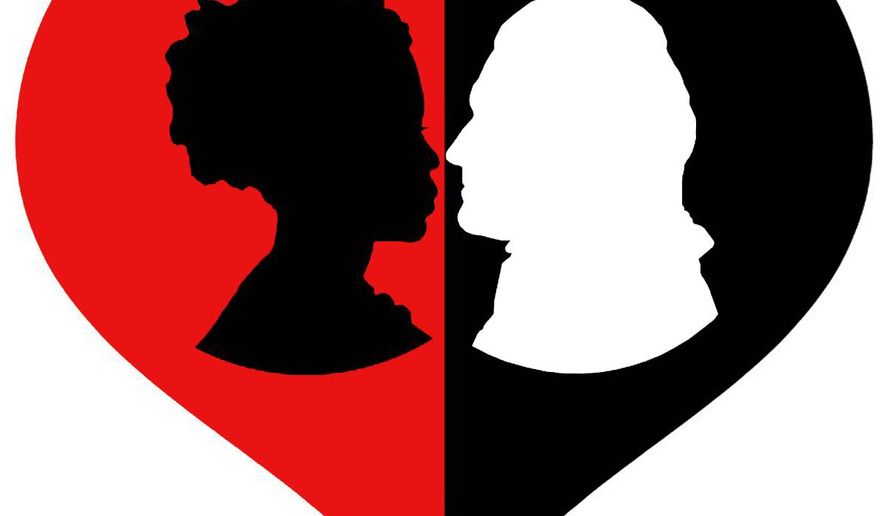OPINION:
If Sally Hemings were still with us, she would be the poster child of the #MeToo movement. Such speculation is the stuff of revisionist presidential history, and a new exhibit at Monticello humanizes, for better or worse, the portrait of Thomas Jefferson the slaveowner.
There’s no portrait of Sally in the history books, but now she gets new attention at Monticello, the remarkable mansion built by the third president just outside Charlottesville, Virginia, where she lived within the Jefferson household. The exhibit revives discussion about whether the woman who was his slave was also his mistress and the mother of several children fathered by the author of the Declaration of Independence.
Many historians now believe that Tom was indeed the father of Sally’s children. This was disputed by earlier Jefferson scholars, particularly the pre-eminent Jefferson scholar Dumas Malone. The new look reduces the president to a man no better than Harvey Weinstein or Bill Clinton. There’s a difference, however, in hitting on a helpless woman for a few minutes of cheap sex and a deeper relationship of love and responsibility in the shadows, giving her a powerful position from which to negotiate her ultimate freedom and the freedom of her children.
For the Jefferson haters, sex with a slave can only be “rape,” and the exhibit uses that word with a question mark. Madison Hemings, the third of Sally’s four children who grew into adulthood, called Jefferson “father,” Sally “mother” and together with siblings, he called “family.” To him, his mother was considerably more than a victim of sexual subordination.
Sally Hemings was the half sister of Martha, Jefferson’s wife — they had the same father — and the Jeffersons inherited Sally, along with her slave mother, when Martha’s father died. Because Sally’s mother was of mixed race, and her father of English descent, she was of light skin, even resembling Jefferson’s wife, enabling two of her adult children to “pass” into the white world.
Jefferson, after he was widowed in his early 40s, arranged for Sally, then 14, to accompany his youngest daughter Maria, whom he called Polly, to Paris where he was U.S. minister to France. Paris was titillated by gossip about the young beauty, who accompanied Jefferson’s daughter in French society, dressed in latest French fashion. This fed speculation about her relationship with the American diplomat.
Such are the historical facts, limited as they are, and it’s impossible to take much from them. But the new scholarship gives complexity, reminding us that it’s wise to avoid the narrow-minded grooves of white-washed history or the stereotypes that distort the actual facts. Most 19th and 20th century accounts reflected disbelief that Jefferson could have fathered children with a slave. But almost conclusive DNA evidence suggests that he did, and current politically correct stereotypes inevitably reflect certainty that Sally was a victim, Tom a tyrant.
Annette Gordon-Reed, Pulitzer prize winner and author of “The Hemingses of Monticello: An American Family,” warns against such facile analysis. “Sally Hemings’ and Thomas Jefferson’s fame requires that they be seen as symbols,” she writes in The New York Times, “she as an achetype for all enslaved women (and therefore, utterly powerless), he as a stand-in for all who enslaved other human beings (and thus all powerful).” Such shallow thinking ignores “the vagaries of their individual lives and personalities, the quirks of their particular circumstances in their time, things good history normally attend to.”
Accepting Sally’s son Madison’s published personal recollection of his father as “uniformly kind” and his parents respectful treatment of each other in no way exonerates the moral reprehensibility of slavery, if that needs be said, but it does show how men and women can individually adapt to set a different example than others expect — in this case, a son seeing his parents as human, rather than as symbols.
What is remarkable is how Sally used her circumstances to negotiate with her slave owner. When at age 16 she refused to return to America from Paris with the Jefferson household, instead of remaining in France where she would be free, she got Jefferson’s promise of future freedom for herself and her adult children, as well as “extraordinary privileges” for them at Monticello.
The new Monticello exhibit hardly absolves the third president of the evil of owning slaves, nor does it try. It goes beyond depicting Tom and Sally as symbols of good and evil. Sally’s room at Monticello is empty, with only her silhouette and the words of her son projected on the walls.
In shedding new light on a president and his slave, we’re reminded once more that where and when you’re born on the timeline of history largely determines your place in the calculation of those who follow. Sometimes good, sometimes not so good.
• Suzanne Fields is a columnist for The Washington Times and is nationally syndicated.




Please read our comment policy before commenting.